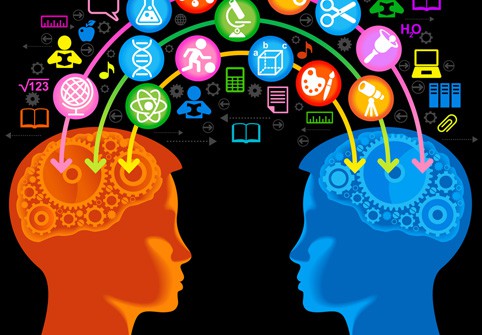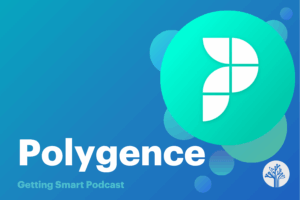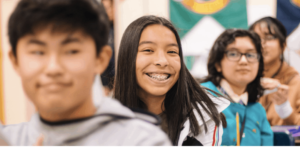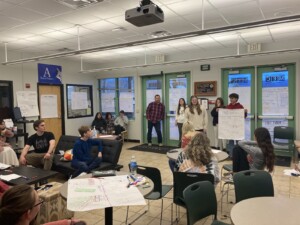What Information Should Show Up Day One With Students?

Co-written By Tom Vander Ark and Carri Schneider, Getting Smart
Students went back to school last week (or will next week) but most did not arrive with any information. Teachers get to know a lot about their students but there is no systematic way to share that when students move from grade-to-grade or school-to-school. As a result, most teachers start from scratch, trying to unlock the student-learning puzzle.
Any parent who has ever tried to access his or her student’s school records or any teacher who has ever been handed a standard cumulative file for a new student knows that the current system of student record-keeping and data-sharing leaves much to be desired. The current student record represents such a small fraction of the learner’s overall profile, and what is collected is often only accessible through complicated systems of records requests, file folders, wait-time, and frustration.
We’re attempting to tackle the 10 big implementation issues at the intersection of college/career readiness standards and personal digital learning. Last week in partnership with Digital Learning Now!, we released our first paper “Funding the Shift to Digital Learning.”
In our second paper, we want to address the following problem and opportunity:
Problem: Kids show up in a new grade/school with little/no information requiring every teacher to start from scratch building an understanding of a student’s needs and capabilities. Any information teachers do have access to is largely summative and gives teachers little insight into the learner’s individual strengths and weaknesses.
Opportunity: The nation’s EdTech Plan “calls for engaging and empowering learning experiences for all learners. The model asks that we focus what and how we teach to match what people need to know, how they learn, where and when they will learn, and who needs to learn…It leverages the power of technology to provide personalized learning and to enable continuous and lifelong learning.”
Customized learning will require a smart recommendation engine that is based upon a comprehensive learner profile that represents a holistic view of the learner over time. The profile must be expanded to include formative data, student work samples and more. Without a robust plan to collect, share, and protect a comprehensive learner profiles we will not unlock the potential of personalized learning.
For the next two weeks we’ll be in interview mode and we could use your help. Consider these questions:
- When a student moves from grade-to-grade or school-to-school, what information should a teacher have available to get to know his or her new student?
- Is there any data that you would NOT want to follow a student?
- Customized learning requires a comprehensive learner profile. Besides typical gradebook entries, what kind of data about students is likely to prove useful?
- How should parents and teachers work together to maximize the value of the profile while minimizing privacy concerns?
- Are there examples you might share of people leading the way in these areas?
- What do you see as the greatest challenges to creating these systems?
If you have an opinion on any of these questions, please comment or send us an email:
[email protected] and [email protected]. Also, tweet your thoughts to @TVanderArk, @CarriSchneider, or #smartseries during our Twitter chat 9:00 a.m. PT Friday, September 7, 2012.
This blog first appeared on EdWeek.







Tom Vander Ark
Here's a few comments from Renee:
1. When a student moves from grade-to-grade or school-to-school, what information should a teacher have available to get to know his or her new student?
- A description of assets. What does this student do well? What work are they proud of? Do they speak another language? Do they navigate community relationships well? Do they listen intently? Do they speak up for others?
- a hint about learning preferences. e.g. will produce a lot of writing if keyboarding is available. Came alive when we implemented cooperative learning. Prefers to work alone. Did his best work when....
2. Customized learning requires a comprehensive learner profile. Besides typical gradebook entries, what kind of data about students is likely to prove useful?
- how the student gets internet connect (home, library, celluar plan, Starbucks/McDonalds/other, school lab)
- does the student need scaffolding/support to access grade level content
- if yes, what scaffolding works best: paired with another student/small group with the teacher/ "get ready" assignments
6. What do you see as the greatest challenges to creating these systems?
-Poor quality of available resources
-Design of most resources are not conducive to personalized aspects
-Extra planning time needed
-Mutiple applications, logins, program structures
-Teacher belief that this type of learning is suboptimal
Lisa Nielsen (@InnovativeEdu)
Tom,
I worked with Joe Renzulli and Sally Reiss to create Personal Success Plans which are created by a student and a team of those put together to help them achieve their goals (i.e. teachers, family, mentors, etc). The success plan indicates a student's talents, interests, abilities, learning styles, and more. It can be updated at anytime.
This was later bought by Compass Learning. You can read about it here http://theinnovativeeducator.blogspot.com/2011/05/creating-personal-success-plan.html
Replies
Tom Vander Ark
Thanks Lisa, sounds like a great frame for a learner profile
Jon Deane (@jondeane)
There are different sets of problems when transferring within a school versus transferring to a new school or district. We get students from more than 40 middle schools each year coming into 9th grade, so any efforts to create systems for sharing student information would be well received.
We'd love to know more about a student's social and emotional learning when they arrive. Would be great if there were more usage and tracking of common measures of social and emotional learning, such as the CASEL standards. There are many such sets of standards which causes its own barrier to usage and to transference between schools, but this is pretty critical data that we need to get better about tracking and sharing.
Would also be a huge improvement if we could at least start with sharing qualitative data that we clearly know and already have recorded and tied to student identifiers, such as EL testing and other state standards test scores. In California the CALPADS system should in theory be able to do this, but it still doesn't. (Does work for CELDT data but not easily, and not at all with CSTs). Test scores are by no means the only piece of data we should share, but at least they are standardized and sould be easy to share.
Arianna Pattek
This is very interesting, You're a very skilled blogger.
I have joined your rss feed and look forward to seeking more of
your wonderful post. Also, I've shared your web site in my social networks!